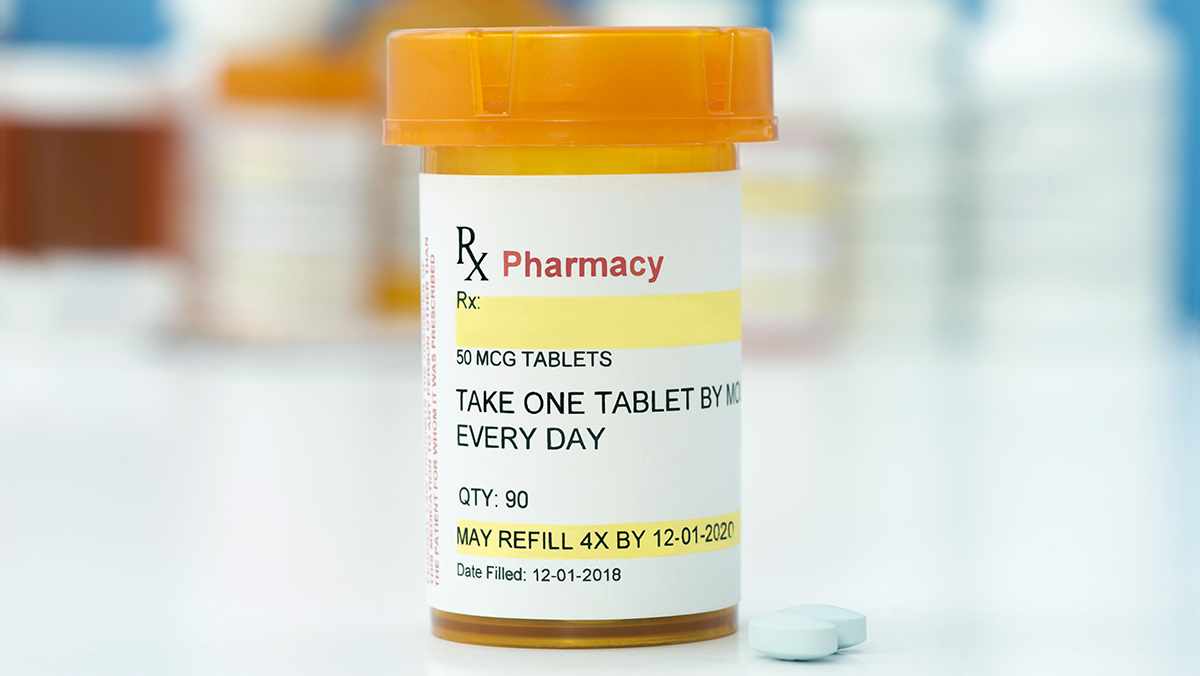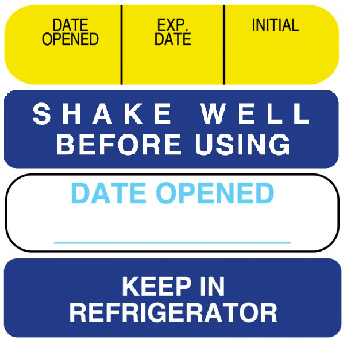From the Five Rights Of Medication Administration and the annual National Patient Safety Goals, to internal processes and protocols, healthcare organizations are laser focused on medication safety. Yet, despite the priority it receives, medication errors are still difficult to prevent. And given the sheer numbers - 55% of Americans take at least one prescription medication, 20% of those have taken three or more, and there are 20,000 FDA approved drugs - it’s no wonder.
Further, an estimated 90 percent of hospitalized patients in the U.S. receive an IV therapy for medications and other fluids at some point during their stay. That’s why medication dosing and drug administration are so important. And a prescription label that guides medical professionals and patients through those steps is an essential element of medication safety.
What Is A Prescription Label?
Applied to a medicine container, a prescription label guides the proper use of medication for both medical professionals and patients.
What Information Should Be On A Prescription Medicine Label
To guide proper use, prescription medicine labels must contain the following information:
- Name and address of the dispensing pharmacy
- Date filled
- Name of the prescriber
- Serial number of the prescription
- Name of patient How to take the medication
- Medication name and quantity
- Number of refills and the date when refills are no longer allowed
- End of use date
In addition, the information on prescription drug labels is supplemented by a drug information sheet.
How Do You Label A Prescription
In a hospital setting, practitioners typically enter prescription information into a pharmacy information system (PIS) such as Cerner, Epic, Allscripts, Meditech, ScriptPro, and more. This information is then transmitted to the pharmacy where a pharmacist fills the prescription. A similar process is followed in a physician's office or clinic, but the medical professional often handwrites a prescription that the patient then has filled at the local pharmacy.
In both scenarios, as the prescription is being processed, the pharmacy prints out a label that contains the key data points detailed above. The specific PIS system used by the hospital or pharmacy drives the format of each label so it fits properly on the medicine container. Both thermal and laser printing technology is used to print the prescription label.
UAL Stocks PIS Labels For All Major Software Systems
What Is A Drug Information Sheet?
A drug information sheet supplements the information contained on a prescription medication label. It provides a variety of additional details including:
- Active ingredients
- Purpose of the medication
- Symptoms or illnesses you can expect the medicine to treat
- Drug interactions
- Warnings about possible side effects
- When not to take a particular medication
- Allergy alerts
- And more
But, there are two problems that limit the usefulness of this important document.
First, some research has found that the majority of people don't read it completely because the language is too complex. Instead, most patients rely on the information printed directly on their medication containers.
Second, the drug information sheet isn’t attached to the prescription medication. Instead, it is typically stapled to the bag with the medicine container or provided to the patient as a separate document.
Ultimately, it is rarely referred to and often discarded. But, there is an effective method of supplementing the safety information contained in the drug information sheets through the use of medication instruction labels.
How Do Medication Instruction Labels Supplement A Pharmacy Medication Label?
In fact, medication instruction labels provide an abbreviated version of the drug information sheet, increasing medication efficacy and eliminating accidental misuse. Common medication instruction labels that benefit patients include:
- Take with food or milk
- Allergy warnings
- Dosage strength
- Time of day to take medication
- And more
These messages on labels applied to the prescription bottle reduce medication mix ups and guide how and when to consume the drug.
In addition, before prescribing the medication, messages like:
|
|
Have proven to assist safe medication dispensing.
How To Label Opioids
And what drugs deserve closer scrutiny to ensure safe medication dispensing than opioids?
Because of its effectiveness as a pain reducer, the number of opioid prescriptions issued grew substantially from when this class of drugs was introduced in the 1990s and remains significant today. In hindsight, the focus on opioids as part of a recovery regimen turned out to be an unfortunate turn of events. Recently it became clear that the relaxed, happy or high feeling one gets from opioids has led to misuse.
Plus, they can be addictive. The Mayo Clinic states, “Anyone who takes opioids is at risk of developing addiction. Your personal history and the length of time you use opioids play a role, but it's impossible to predict who's vulnerable to eventual dependence on and abuse of these drugs.”
But even with the heightened awareness, opioids are still prescribed at a high rate. In 2020 it was at a rate of 43.3 per 100 people and a previous study found one in three Medicare Part B beneficiaries received a prescription opioid.
Sadly, as helpful as opioids are in mitigating pain, an estimated 10.1 million people misused them. Legal or illegal, stolen and shared, these drugs are responsible for the majority of overdose deaths in the U.S. today. Certainly, policies including lower dosages for shorter intervals and exploring medication options instead of opioids are helpful. So is implementing opioid labeling and storage steps to assist proper dispensing and help prevent unintended use. For example,
|
|
Treating COVID Patients With Paxlovid
Paxlovid is an oral antiviral pill used to treat COVID. Although it is an effective treatment that reduces the severity of the virus, especially with high risk patients, care teams need to guard against potential drug interactions.
A recent study found that a sizable proportion of elderly people are on medications that could interact with Paxlovid. Medication instruction labels guide administration and help prevent interactions that may cause serious complications.
United Ad Label
With over 50 years serving the healthcare industry, United Ad Label understands the medication safety challenges providers face. With those challenges in mind, we’ve developed pharmacy and medication labels that help healthcare organizations enhance medication safety. You can order both stock and custom items that meet your specific needs. Contact us to learn more.
Editor's Note:
This post was originally published in March 2022 and was updated in November 2022 with information on the Paxlovid study.

